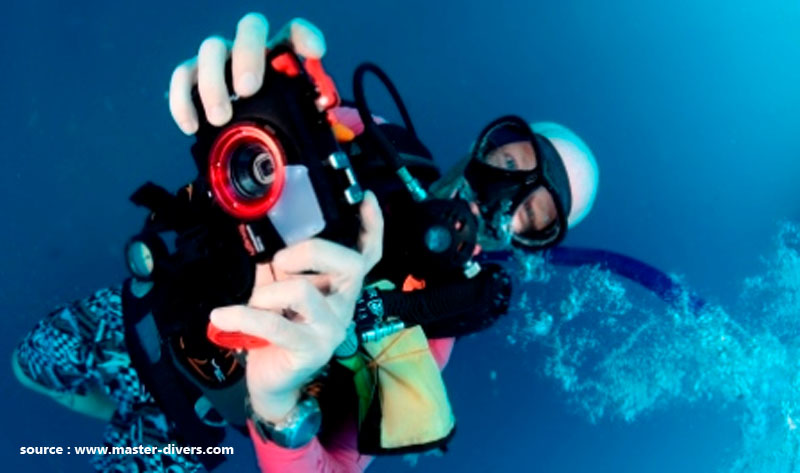An open water dive is one of the most sensational experiences you can have in a lifetime. You can let yourself impressed by amazing wildlife, unspeakable colours and surprising sounds of these underwater creatures. It comes without saying that such an experience will make you want to capture it somehow, in order to share it with others or to savour it over and over again. This means they need a camera. But what camera should you get and how do you use it to capture those precious underwater moments?
Are You Looking To Buy A Camera?
Are diving and snorkelling part of your regular activities and hobbies? Do you think that you’ll have plenty of opportunities to use your camera? Perhaps you consider learning the art of diving from professionals, so that you can take this hobby to a new level. Or maybe you just want to create cool memories from your family diving holidays and trips, for example the Kinabatangan River Tour, and enjoy owning a camera and a photo kit to use as you wish.
High-End
If money is not a big issue, consider taking a look at the Olympus Tough! TG5 with waterproof housing. You’ll pay about £620 to call this camera yours, but it will be well worth it. This model is waterproof to 45 metres. The camera is rugged and durable. It provides excellent noise control and colour processing.
Mid-Range
For a bit under £400, you can get the Nikon Coolpix W300 which is waterproof up to 30 metres without the need for housing. The wide zoom range and the high resolution monitor recommend this camera as being the right tool to take some extraordinary shots. We do love this camera, hence our decision to rent it time and again!
Bargain
The Fujifilm FinePix XP130 costs only £99 and this makes it a real bargain. If you’d like to enjoy the flexibility of having your own piece of kit but without wreaking havoc on your budget, this is your best option. Easy to use and waterproof up to 20 metres, this camera will serve its purpose of enabling you make the memories you want. Don’t expect fantastic image quality, though.
Photography Tips
Let’s say you have either rented or bought your camera. How do you use it to capture the most memorable moments of your underwater adventures? A tool will always be as good as the individual operating it. Particularly if you don’t have the opportunity to dive too often, you’ll value your images a lot. This is why you should take time to master the skill of creating great photos by learning the right technique.
Dive Practice
You must practice both diving and photography in order to optimise your outcome. You need full confidence in your diving skills to be able to focus your attention on framing the scenery and on focusing on the subject. If you want to take our PADI Digital Underwater Photography course as a diver, you’ll need the PADI Open Water Diver qualification. If you don’t want to take this qualification, you can still undertake this photography course, but as a snorkeler.
Light
Shallower depths provide enough light to allow you to take great shots. In terms of clarity, morning light is the best. These situations require that you get as close to your subject as possible, but without disturbing it. When taking photos in deep water, you’ll want to use the flash or a strobe. Nevertheless, you should do your best to protect the surrounding habitat and to avoid disturbing other photographers.
Colour
Learning how to use the light correctly will enable you to obtain great colours. When shopping around for a camera, ensure it allows white balance adjustments. This will enable you to control blue hues, thus being ideal for underwater photography. For best results, consider using ultra wide lenses and low aperture. Colour corrections should be part of your photo editing flow.
Editing
A little editing can take you a long way. Sharpen your images, enhance their colours, crop the scenes, and set the white balance to get natural colours and a realistic look. Once you complete our Level 2 PADI Digital Underwater Photography course, we will send you all your photographs so that you can try to improve them even further









